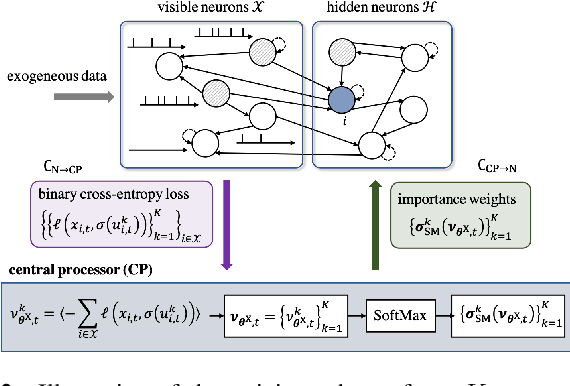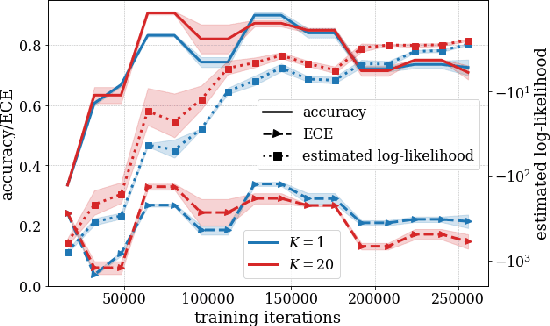Multi-Sample Online Learning for Spiking Neural Networks based on Generalized Expectation Maximization
Paper and Code
Feb 05, 2021



Spiking Neural Networks (SNNs) offer a novel computational paradigm that captures some of the efficiency of biological brains by processing through binary neural dynamic activations. Probabilistic SNN models are typically trained to maximize the likelihood of the desired outputs by using unbiased estimates of the log-likelihood gradients. While prior work used single-sample estimators obtained from a single run of the network, this paper proposes to leverage multiple compartments that sample independent spiking signals while sharing synaptic weights. The key idea is to use these signals to obtain more accurate statistical estimates of the log-likelihood training criterion, as well as of its gradient. The approach is based on generalized expectation-maximization (GEM), which optimizes a tighter approximation of the log-likelihood using importance sampling. The derived online learning algorithm implements a three-factor rule with global per-compartment learning signals. Experimental results on a classification task on the neuromorphic MNIST-DVS data set demonstrate significant improvements in terms of log-likelihood, accuracy, and calibration when increasing the number of compartments used for training and inference.
 Add to Chrome
Add to Chrome Add to Firefox
Add to Firefox Add to Edge
Add to Edge